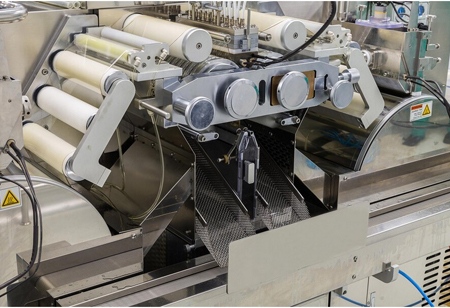
At the International Textile Machinery Association (ITMA) that was held in August, 2023, exhibitors made a presentation of the latest weaving technologies. With the help of modern innovations like automation and IoT, these technologies are constantly trying to promote continuous commitment to sustainable production and process digitization. Over the last few years, there has been an emergence of many new loom weaving technologies and spinning machines that have not only organized the production process, but have also been successful in addressing the labor shortages arising in this sector across the globe.
“Textile manufacturers face various challenges in today's industry. Rising costs of raw materials can impact profitability. Balancing sustainability with advanced technology is a priority, as manufacturers strive to reduce their environmental carbon footprint while remaining competitive. Automation and digitization are key areas of focus to improve efficiency and productivity”, mentioned Abhijit Kulkarni, CEO, ATE Enterprises.
During the last three decades, the weaving machinery industry has undergone massing automation, emergence of production and performance monitoring technologies, storage of data in cloud and data access through communication using electronic devices. Let us look at the different kinds of loom weaving technologies that are currently being used industrially.
Over time, computerized loom models have been able to replace traditional looms. Manufacturers are able to exercise more control and balance over the weaving process, patterns, tension and speed. Through the use of computerized looms, better intricacy in designs and patterns can also be achieved that is further facilitated by rapid production.
One prominent company that manufactures computerized looms is Toyota Industries Corporation. They are known for their air jet and water jet looms, which are equipped with advanced computerized controls for precise weaving processes.
Traditional shuttle looms have widely been replaced by air jet looms that offer higher weaving speeds by making use of compressed air that propels the weft yarn through the shed. From lightweight and all the way to heavy duty materials could be weaved in the modern air jet looms and are most suitable for weaving wide ranges of fabrics.
In this regard, one of the well-known companies that manufactures air jet looms is Tsudakoma Corporation. They specialize in producing air jet weaving machines that are known for their high-speed operation and advanced technological features.
When it comes to low energy consumption and high weaving speeds, water jet looms have been able to make a mark in the industry. These looms are equipped to offer versatility in weaving processes and facilitate weaving of yarns that resemble complexity in patterns. These looms make use of water streams in order to insert the weft yarn.
To give an example, At ITMA 2023, Picanol, a globally renowned weaving machine manufacturer, presented its latest weaving machines manufactured using high-end technologies and the company specializes in water jet looms. The eye-catcher at the Picanol booth will be the world premiere of an all-new and revolutionary rapier weaving machine, the Ultimax that will become available in the first quarter of 2024.
Rapier looms use flexible rapier tapes or rods to insert the weft yarn across the warp threads. They are capable of handling a wide range of yarn types and are suitable for weaving intricate designs.
To give an example in this regard, Amar Jacquard is one of the recognized designer and manufacturer of Electronic Jacquard and Rapier Loom in India. Based out of Ludhiana (Punjab), Amar Jacquard provides expertise within the field of textile machinery that include high speed Electronic Jacquard AND Rapier Loom with advanced weaving technology.
Most of the modern innovations in loom weaving technologies offer versatility and help in production of complex patterns and Jacquard looms are no exception. This loom monitors each warp thread individually and uses a computerized system to control them. Fabrics and designs that need to decorative and involve intricate designs can be manufactured with ease with jacquard looms.
A well-known company that manufactures Jacquard looms is Stäubli Group. Stäubli is a Swiss-based company that produces a variety of textile machinery, including Jacquard looms known for their precision and reliability in producing intricate woven designs.
Warp stop motion systems detect broken warp threads and automatically stop the loom to prevent defects in the fabric. This technology helps reduce material waste and ensures consistent fabric quality. There are several other technology innovations that have taken place and are applicable for all kinds of modern loom weaving machines. These include developments in motor technologies that have also brought about power efficiency in weaving operations. Some of the manufacturers have also started providing remote control and monitoring features and control systems as well. Looms are substantially being integrated into Industry 4.0 frameworks that are enabling data-driven optimization of production processes. Sensor technology, data analytics, and machine learning algorithms are utilized to enhance productivity, quality control, and predictive maintenance in weaving operations.
We use cookies to ensure you get the best experience on our website. Read more...